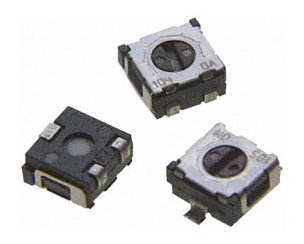What Are Resistors?
The resistor is one of the most common types of elements in electrical devices today. They are two–terminal components that will create a resistance to the flow of current. Resistors help to make the management of the current much simpler, and they are a common part of most electronics in today’s world. Resistors follow Ohm’s Law, or V=IR. V stands for voltage, I for the current in amperes, and R stands for the resistor value in Ohms.
What about Variable Resistors?
A variable resistor gives the user more control over the resistance, as it allows for variance or for the resistor to be changed in order to meet the resistance requirements of the user. Changing the resistance as a user is actually very simple. Devices that utilize variable resistors will have external controls, such as a knob or a slider that can affect the resistance. A great example of this would be a knob on a device that could change the temperature.
Preset forms of variable resistors are available as well. End users cannot change their values. These types are used during production, setup, and testing phases of a product’s manufacture.
Carbon Composition – these are some of the most common types of variable resistors on the market. They use a mix of carbon, as well as a filler material. The overall combination that they use determines just how resistive the potentiometer element is.
Cermet – this is a combination of ceramic and metal materials, and these are most commonly used whenever there are high temperatures, as ceramic can handle high heat with ease. This type of variable resistor setup has low noise as well.
Metal Oxide – the metal oxide variable resistor usually has zinc oxide in it, as they can make it easy to pass current at normal household levels. It is common to find these varistors in surge protectors. They can prevent high current from passing into the surge protector.
Conductive Plastic – another option is the variable resistors made from conductive plastic ink. This ink has a number of materials in it, including carbon and resin. They have a high rotational life and a low noise output.
Wire Wound – these are actually quite expensive to produce. They use a coil or resistance wire, and they do give the highest level of performance. The wire wound resistors cannot have any insulation on them.
Spindle Type Knobs – spindle knobs, or rotary knobs, are a type of potentiometer that makes adjusting the resistance simply by turning the knob to the right or the left. These are very common devices for controlling the resistance.
Screwdriver Adjustable – as the name would suggest, this type of variable resistor is adjustable with the aid of a screwdriver, which can increase or decrease the resistance.
Linear – with this type variable resistor, the relationship between the resistance and where it is positioned on the track is linear, so the resistance always varies by the same amount. Many preset potentiometers use this setup.
Logarithmic – these have resistive elements that taper from one end to the other. This means the resistance level will vary from one end to the other when turned. One will be the low side and the other the high side. One of the most common uses for this is in an audio amplifier.
Several types or resistors exist, and each of those resistors has a different symbol to help people understand what type of resistor it is at a glance.
The standard resistor, which restricts the flow of the current, has a simple symbol of a rectangle set upon a straight line. A variable resistor (rheostat) with two contacts features the same symbol, except it also includes an arrow going through the rectangle and pointing up and to the right. The variable resistor (potentiometer) with three contacts looks similar to the regular resistor symbol, only it has an arrow that points down at the top of the rectangle. Finally, the variable resistor (preset) features the line and rectangle, but it has a T line that crosses through it at the same angle as the rheostat resistor.

Upon first glance, it can appear as though these are difficult to read and understand, but just a few minutes studying them and looking at the actual symbols makes it easy to differentiate between them.
What Are Variable Resistors? How Are They Different from a Regular Resistor?
Variable resisto rs are useful for regulating current, and they make it easy to do with just the turn of a dial or knob. They can be very useful for a variety of different types of devices today, including the volume and gain control on electric instruments such as guitars and basses. They are useful for dimmer switches and even temperature control. The variable resistor will have a maximum and minimum value through which it can alter the current. Potentiometers and rheostats are two of the most common types of variable resistors in use.
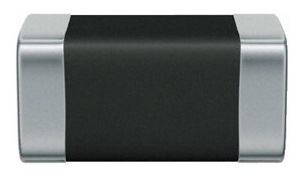
The regular fixed resistor is quite a bit different. With those types of resistors, you will not be able to alter the level of resistance they have. They have a set and predetermined amount of resistance necessary for whatever type of electronic device contains it. These are specialized resistors used for the express purpose called for in that device.
The one that a device uses will vary based on the needs of the design. If someone would have no reason to change the current resistance, one will use a fixed resistor. However, if the device requires input for lighting levels, volume control, or anything similar, one will want to use a variable resistor instead.
How Did the Invention of a Resistor Help Mankind?
Think about all of the different sorts of items that make use of resistors today. Practically everything that requires an electrical current will have a resistor of some type, either fixed or variable. Without the invention of the resistor, computers, cell phones, modern televisions, components to the computer systems in cars, and so many of the things we take for granted would simply not exist. The world would be a very different place. In fact, it would probably be a world we would not even recognize.
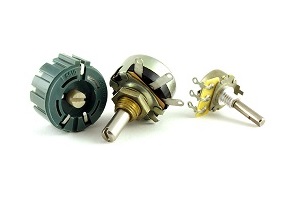
Which Modern Applications Need Variable Resistors?
Variable resistors are helpful for many different types of applications and devices today. Some of the most common devices include anything that has a volume control, including musical instruments. Dimmer switches are another popular example of a modern device that uses the variable resistors. The sliders and knobs used with the variable resistors make it easy to change the amount of current coming through the circuit. Trimmer resistors can take this to the next level and allow for even finer control where multi turn types are used. These are common with devices that have a smaller resistance change.
What Types of Variable Resistors Exist?
The following are some of the most common types of variable resistors and their various usages and applications, along with mounting gear.
Ceramic Transient Voltage Suppressors — this ceramic device reacts to and prevents overvoltage in an electrical unit. These are very useful in many different sorts of electronics today to help prevent the dangers of overvoltage that could potentially destroy the device. Ceramic transient voltage suppressors are an important part of surge protectors, as are metal oxide varistors as seen below.
Metal Oxide Varistors — this is the most common type of varistor available, also called an MOV. They have a ceramic mass of zinc oxide grains that are between the electrodes. The electrodes are two small metal plates. These are useful in suppressing line voltage surges. However, many of the resistors have trouble stopping large surges. They are helpful with short surges that last between eight and twenty microseconds, but they cannot deal with sustained current. They are helpful against lightning strikes. Metal oxide varistors are an important component in surge protectors for this reason.
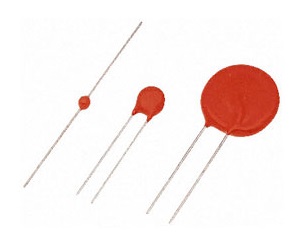
Potentiometer Edge Wheel — the edge wheel or thumbwheel. The potentiometer edge wheel is the portion on the outer part of the pot that you can turn, changing the voltage with your thumb or finger. Many rheostats will have wheels such as this, but others may have different input devices.
Potentiometer Knobs — knobs are another way you will be able to manipulate the voltage. Potentiometer knobs come in many different styles, and they could be plastic or metal. They are common on a wide range of different sorts of devices, including as knobs on an electric guitar’s controls.
Potentiometer Lock Washers — these are also very useful with guitars, as they will lock the pot into place so that it doesn’t move around. This ensures a tight fit. The potentiometer lock washers are available in different sizes and styles so they should be able to work for different types of guitars, as well as different devices entirely.
Potentiometer Mounting Kits — the kits can be very handy, as they will have absolutely everything one needs to mount the pot, including the pot, nut, washers, shafts, and protectors. Potentiometer mounting kits have everything needed, and you can be sure all of the parts that come together in the kit will fit and work with one another.
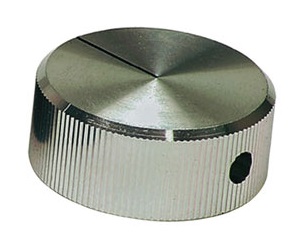
Potentiometer Mounting Nuts — another piece needed when mounting potentiometers is the nut. The nut works in conjunction with the washer to ensure everything is in place and stays that way. Again, potentiometer mounting nuts are useful with guitars and similar instruments, but they work with other devices as well. They are helpful for anyone who needs to mount a pot.
Potentiometer Protectors — the protectors, or guards, can take different shapes and styles based on the purpose of the pot. Although potentiometer protectors could look different, the function is the same. They are there to make sure the potentiometer is safe from the possibility of external damage. Protectors such as this are often useful on the throttle of motorcycles.
Potentiometer Shafts — the shaft is the part of the pot that goes into the electronics. The knob attaches to the shaft and turning the knob will spin the shaft. Because so many different types of electronics use rheostats such as this today, there are many different types and lengths of shaft and mounting hole. Some potentiometer shafts are metal, while others are plastic.
Potentiometers — a potentiometer is a variable resistor with a third terminal that is adjustable. Another name for this is a pot. They include sliding contacts that will form a voltage divided one can adjust. When only two of the terminals are in use, this is the classic variable resistor. The best example of this sort of resistor, and potentiometer, is the rheostat. In fact, the above potentiometer parts are the types of things you would often see in thermostats and rheostats.
Rheostat Dials — the rheostat dial is the control feature of the device. Turning the dial one way or the other will change the amount of current.
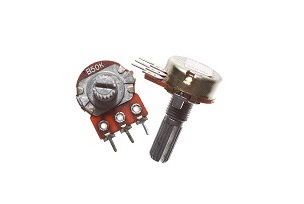
Rheostat Knobs — the knobs are another way to control the rheostat, and they work in much the same way that a slider or dial would work. Turning rheostat knobs in one direction will increase the current flow and turning it in the other direction will reduce the current flow.
Rheostats — the purpose of a rheostat is to control the current by changing the resistance. It does this without ever interrupting the circuit. They are useful in a wide range of different types of devices today, including electrical musical instruments, as well as dimmer switches and sliders. By increasing the resistance, the flow of current drops. When you lower the resistance using the knob or switch, the flow of current rises.
Spindle Locks — a spindle lock uses a pin in the headstock of a device in order to stop the rotation of the spindle. This keeps things in place, and makes removal and mounting much easier.
Thermistors — the thermistor is a temperature compensated resistor. The amount of resistance it offers varies based on the temperature. The electrical resistance drops by heating and the device is useful for measurement and control. These are very useful for inrush current limiters, overcurrent protectors that reset themselves, self–regulating heating elements, temperature sensors, and more.
Trimmer Resistor Adjustment Tools — a trimmer resistor is capable of manipulation to change the current in just small increments. The trimmer resistor adjustment tools let one adjust their resistor and fine tune it for their specific needs.
Trimmer Resistor Mount Adaptors — these trimmer resistor mount adaptors make adaption to different resistors and various sizes much simpler than replacing the entire resistor.
Trimmer Resistors — a trimmer resistor is the type of resistor one would use for an application where there is only a need for a very small change in resistance. They come in various sizes and levels of precision. They are common in audiovisual equipment and components.
